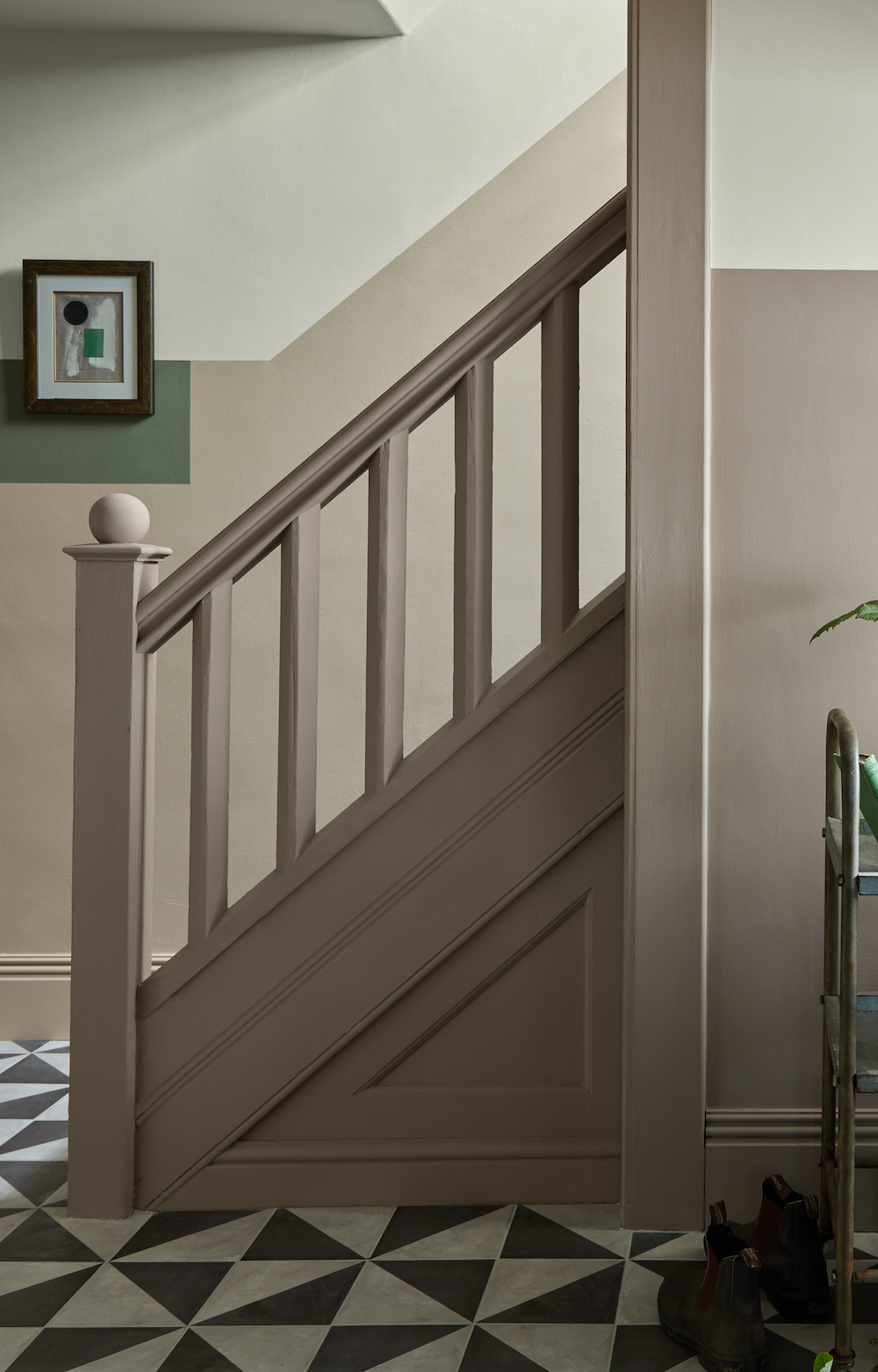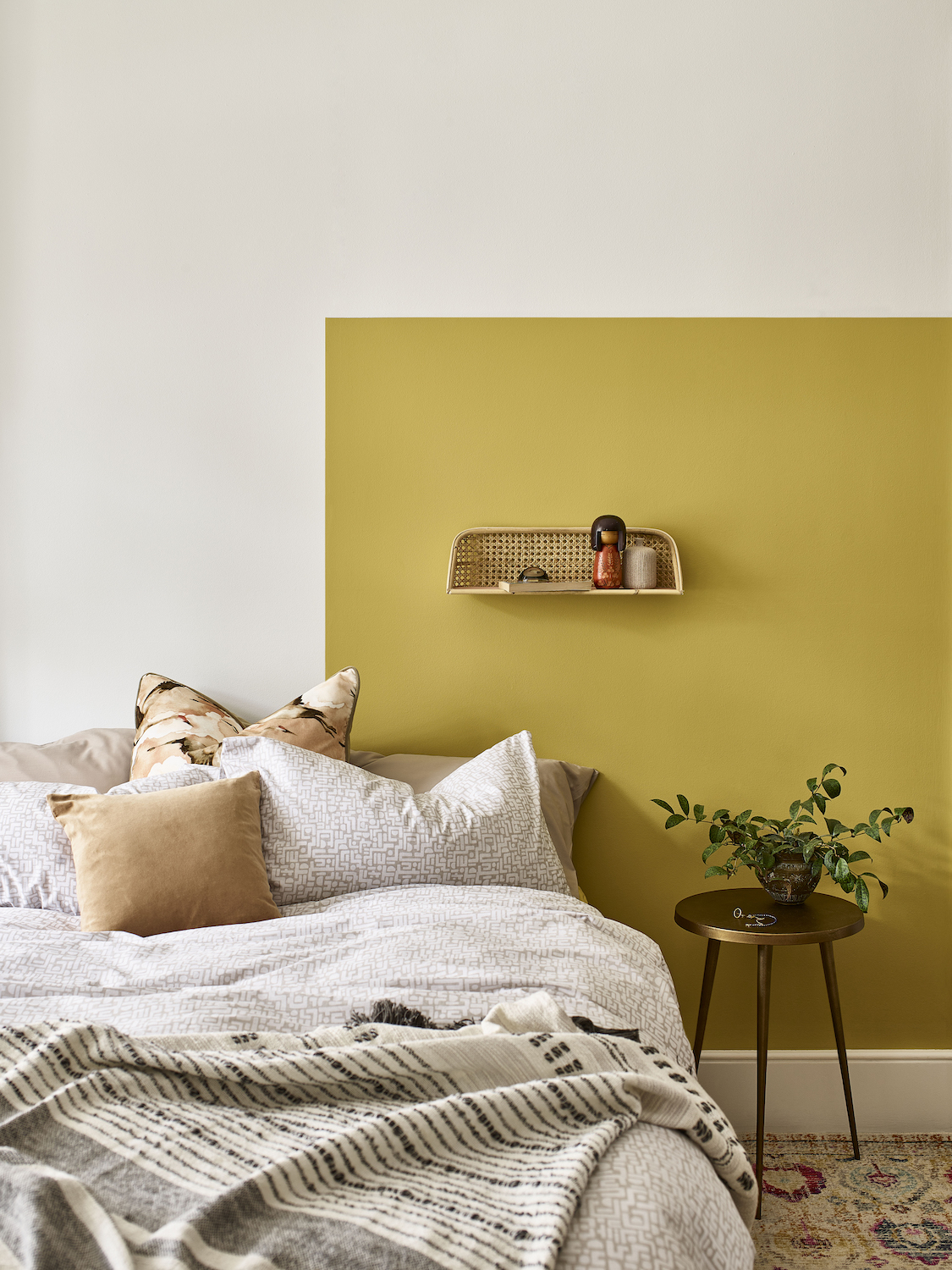Eggshell paint - what is it and how best to use it?
Experts explain how and where to use this eggshell paint, a hard-wearing finish that gives professional results

Eggshell paint is one of those phrases you hear a lot in decorating. But knowing when best to use it, and how to choose it, and what to use it on, can be as tricky as sifting all those color charts was in the first place.
So we asked our experts give the lowdown on this hard-wearing finish and where to apply it for beautiful results when it comes to how to paint a room in a modern home.
'Eggshell paint is durable, washable and scuff resistant,' says John Dyson, founder of Earthborn Paints. 'It has a silk-like, low-luster finish which resembles that of the protective shell of an egg, hence its name. Eggshell is best for painting interior woodwork, such as skirting boards, architraves, doors and interior wood trims as it offers a durable surface that can be wiped clean with a soft cloth, or sponge, and water'.
Eggshell paint - what is it and how best to use it

'Eggshell became popular in the Georgian period and has always been associated with quality homes and decorating,' says Marianne Shillingford, creative director at Dulux.
Eggshell is the perfect finish for woodwork, especially when you want your walls and skirting boards in the same colour to be the closest match. 'Paints with different sheen levels (even when they are exactly the same color) will reflect and absorb light to different degrees and so they can appear very slightly different when fully dry,' Marianne adds.
How to use eggshell paint
1. Clear the space and tape the area

If you're not sure how to proceed with the practical side of your paint ideas, it's worth doing your homework, as it will save time in the long run. It will also prevent expensive mistakes or accidents and ensure a good result.
'Before you start painting anything, you should remove or cover any furniture with a dust sheet that is near the area you will be working on,' says John Dyson, founder, Earthborn Paints.
The Livingetc newsletters are your inside source for what’s shaping interiors now - and what’s next. Discover trend forecasts, smart style ideas, and curated shopping inspiration that brings design to life. Subscribe today and stay ahead of the curve.
'Use masking tape between the woodwork and the walls to protect them (if you're using different colors for each). If you’re painting the skirting board you will also need to cover and tape the floor to protect it.'
2. Prepare the surface

The preparation can sometimes take longer than the paint job, but no matter how tempting, it's not worth skimping on this step.
'Preparation of the surface is always key to a lasting beautiful eggshell finish so make sure the surface is clean and smooth before you start,' says Marianne Shillingford at Dulux. 'Wash the areas you are painting with sugar soap and wipe away the residue with clean water (wear rubber gloves).
'Then fill any holes and gaps with wood filler or decorators caulk for cracks between the woodwork and walls, sand the surface smooth and remove dust with a brush or vacuum cleaner.'
'If your woodwork has knots, treat these with a proprietary knotting solution to avoid sap leaking out and spoiling your finish,' adds John Dyson at Earthborn.
3. Prime and paint

Once the surface of your interior woodwork is ready, you can apply a coat of primer (or undercoat). It's best to use the primer or undercoat that the paint manufacturer suggests.
Primer is generally used on bare timber and undercoat on pre-painted timber. However, formulations will vary, depending whether you're using acrylic paint or more natural pigment-based paints.
'Once the primer is dry, sand the surface lightly and remove the dust, before applying two coats of eggshell in your favourite colour,' adds Marianne Shillingford at Dulux. 'It's worth using a good quality synthetic brush in combination with a good quality mini roller designed for gloss finishes to get the best results.'
We think this is the best primer to use under eggshell, as it works perfectly on wood.
'Allow the primer to dry fully before applying your eggshell. This is key to creating a neat finish,' says John Dyson at Earthborn. 'Stir your eggshell thoroughly before use too. 'It's essential to achieving the best finish as its ingredients have a tendency to separate.
'Although eggshell paint will be dry to the touch after one to two hours, you should allow six - 12 hours drying time between coats in normal humidity and temperatures.'
Jacky Parker is a freelance lifestyle journalist and writer, producing a wide range of features for magazines and digital platforms. She has written for Livingetc and its sister titles, Homes & Gardens and Country Homes & Interiors for more than 15 years, both as a freelance contributor and as Acting Digital Editor and Acting Style Content Editor, regularly reporting on the latest interiors, gardens and wellness inspiration, speaking to experts in their respective fields, and discovering the best tips.
Jacky has also written for other publications, including Sunday Times Style, The Telegraph, Architectural Digest, House Beautiful, ELLE Decoration, Red, Grand Designs and more.